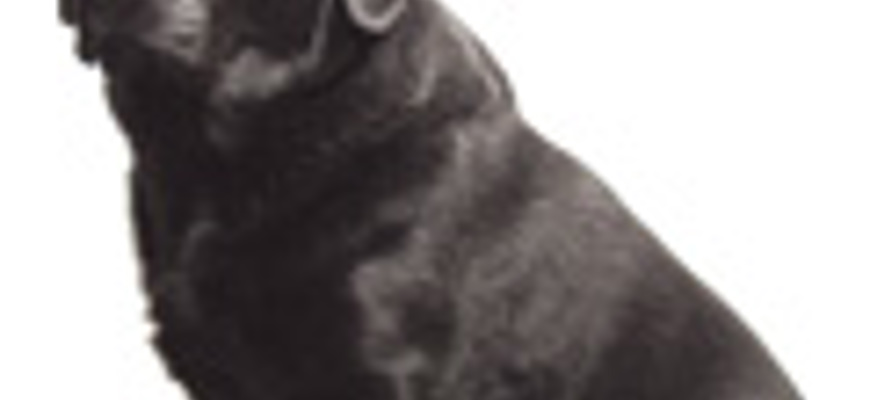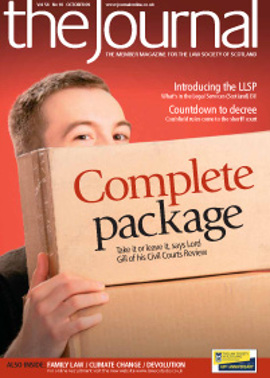Dog's chance

The recent Inner House decision in Welsh v Brady [2009] CSIH 60 (9 July 2009) provides helpful clarification of the law relating to injuries caused by animals where the circumstances preclude a finding of strict liability in terms of s 1(3) of the Animals (Scotland) Act 1987. In other words, if an animal does not kill or injure severely a pursuer by “biting or otherwise savaging, attacking or harrying”, is it still possible to argue that strict liability should attach in terms of the Act?
The pursuer had been walking her golden retriever in a field near her home. The defender was walking his black labrador Ebony in the same field. Neither dog was on a lead. Ebony ran towards the pursuer and collided with her, severely injuring her right knee. There was no suggestion that Ebony had “savaged, attacked or harried” the pursuer within s 1(3) of the Act. It was therefore necessary to argue that strict liability should attach in terms of s 1(1)(b). The Lord Ordinary held that there was no negligence at common law, nor was the defender liable under s 1(1)(b). The pursuer appealed against the latter finding.
Section 1(1) of the Act states that “a person shall be liable for any injury or damage caused by an animal if – (a) at the time of the injury or damage complained of, he was a keeper of the animal; (b) the animal belongs to a species whose members generally are by virtue of their physical attributes or habits likely (unless controlled or restrained) to injure severely or kill persons or animals, or damage property to a material extent; and (c) the injury or damage complained of is directly referable to such physical attributes or habits”.
There was no dispute that s 1(1)(a) and (c) were satisfied. The debate therefore focused on whether or not Ebony satisfied the test of likelihood of severe injury in s 1(1)(b)).
Step by step
The Lord Ordinary found that Ebony weighed 25kg. She was a large, lively, boisterous animal who did not always respond to verbal commands from the defender. It was accepted that Ebony must have struck the pursuer with considerable force given the severity of injury.
The Inner House held that for a pursuer to satisfy the requirements of s 1(1)(b) it is necessary first to identify the species of animal under consideration. By s 1(2)(a) a species includes “a form or variety of the species or a sub-division of the species, or the form or variety, identifiable by age, sex or such other criteria as are relevant to the behaviour of animals”.
Having identified the species, the next question is whether its “members generally” are “likely” to do certain things and, if they are, is that “by virtue of their physical attributes or habits”? While some characteristics
of the animal may be relevant in defining the “species” (e.g. age or sex), the characteristics of that particular animal are not relevant once the species itself is identified. The focus is therefore placed on the species, not on the individual animal in question.
The next step is to identify the relevant “physical attributes or habits” which are shared by members of the species. Finally, one must question whether members of that species are “likely”, by virtue of those physical attributes or habits, unless controlled or restrained, to injure or kill persons.
The causation test in s 1(1)(c) requires that the injury complained of must be “directly referable” to the physical attributes or habits considered under s 1(1)(b).
Shortfall
The court emphasised that before there can be a finding of strict liability under s 1, evidence must be led, and a finding made, about the physical attributes and habits of the members generally of the species in question. Whilst there is no requirement for expert evidence, it is probably wise to secure an opinion and lead evidence from an independent expert such as a veterinary surgeon or a consultant in animal behaviour.
The reclaiming motion failed. It was held that the evidence led (which included expert evidence from an experienced dog handler) fell short of meeting the criteria in s 1(1)(b). The evidence did not establish that black labradors are, by virtue of their physical attributes or habits, likely to injure severely or kill persons. However, the guidance in the judgment means it is arguably still possible for a pursuer to succeed in proving a case under s 1(1)(b), provided the evidence led addresses all the statutory criteria set out above.
The Inner House also made it quite clear that if a pursuer’s injury is “directly referable” to biting, savaging, attacking or harrying by a dog then strict liability must attach in terms of s 1(3). It is not then necessary to look any further into the physical attributes or habits of that species of dog.
Ruth Kelliher is an associate with Digby Brown LLP and acted for the pursuer in Welsh v Brady
In this issue
- The Combined Standard Clauses (2009 edition)
- Preserving a legal inheritance: settlement rights in the "Occupied Palestinian Territories"
- The European Court and the duty to investigate deaths
- Chief Executive's SGM address
- Shelter's online resources
- Musical copyright and contract
- The international swap shop
- Headline fortnight
- The Gill Report? What's not to like?
- Solicitor advocates and conflicts of interest
- Settlement in the West Bank
- Package deal
- RoS = economic value
- Defining the future
- Global leader?
- Dog's chance
- Coulsfield rules OK
- Money and your life
- Experts on the case
- At the hub, 10 years on
- Guardians: don't look to the Fund
- From the Brussels office
- Ask Ash
- Making the most of ABS
- Planning for growth
- The perils of posting
- ARTL: friend or foe?
- Where privacy prevails
- How was it for you?
- Agreeing rescues with creditors
- Adopting new solutions
- Divorce for gender change
- Scottish Solicitors' Discipline Tribunal
- Book reviews
- Website review
- A safe pair of hands tops the bill
- Law out of step






